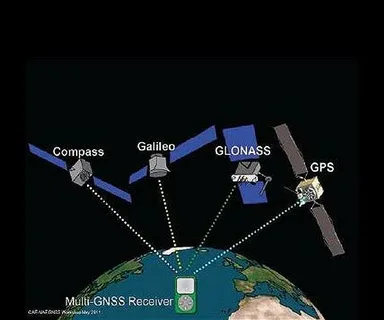In today’s world, we rely heavily on satellite navigation—whether for driving, shipping, agriculture, or smartphone apps. But while many people use the term “GPS” as a catch-all, there’s a broader and more powerful system at play: GNSS. So, when it comes to GNSS vs GPS: what’s the difference and why it matters, it’s essential to understand how they work and how they impact our daily lives.
Understanding GPS
GPS, or Global Positioning System, is a satellite-based navigation system developed and maintained by the United States. It became fully operational in the 1990s and has since become a global standard for location services.
GPS works through a network of at least 24 satellites that send signals to Earth. A GPS receiver uses these signals to determine your exact location, velocity, and time—anywhere on the planet, as long as it can receive the signals.
What is GNSS?
GNSS, or Global Navigation Satellite System, is a broader term that encompasses all satellite navigation systems globally. This includes:
- GPS (United States)
- GLONASS (Russia)
- Galileo (European Union)
- BeiDou (China)
- Regional systems like NavIC (India) and QZSS (Japan)
GNSS-capable receivers can access signals from multiple satellite systems at once, significantly improving accuracy, reliability, and availability—especially in challenging environments like dense cities or mountainous regions.
GNSS vs GPS: Key Differences
When comparing GNSS vs GPS: what’s the difference and why it matters, several critical factors come into play:
1. Coverage and Accuracy
- GPS is just one system. If a receiver relies only on GPS, it may experience signal issues in obstructed areas.
- GNSS uses multiple systems, so more satellites are available at any given time. This improves location accuracy and reduces signal loss.
2. Reliability and Redundancy
- With GNSS, if one satellite system encounters an issue, others can compensate.
- GPS-only systems have no backup if GPS signals are degraded or unavailable.
3. Application Flexibility
- GNSS is preferred in high-precision applications like autonomous vehicles, drones, and surveying due to its superior performance.
- GPS may suffice for general navigation but falls short in demanding or critical applications.
Why It Matters for Users and Businesses
The distinction between GNSS and GPS is not just technical—it has real-world implications:
- Smartphones today often use GNSS to provide more accurate location data, especially in urban environments.
- Logistics companies rely on GNSS for precise tracking and route optimization.
- Farmers use GNSS in precision agriculture to reduce waste and increase yields.
- Emergency services depend on reliable positioning, especially when time is critical.
Understanding the debate of GNSS vs GPS: what’s the difference and why it matters helps users make smarter choices about the devices and technologies they rely on.
Conclusion
In summary, GPS is a specific satellite system, while GNSS refers to a collection of satellite systems that work together to provide improved global coverage and accuracy. As technology continues to evolve and our reliance on precise location data grows, understanding GNSS vs GPS: what’s the difference and why it matters becomes increasingly important. Whether you’re navigating through a city or operating advanced technology in remote areas, GNSS offers the robust, reliable solution the modern world demands.


